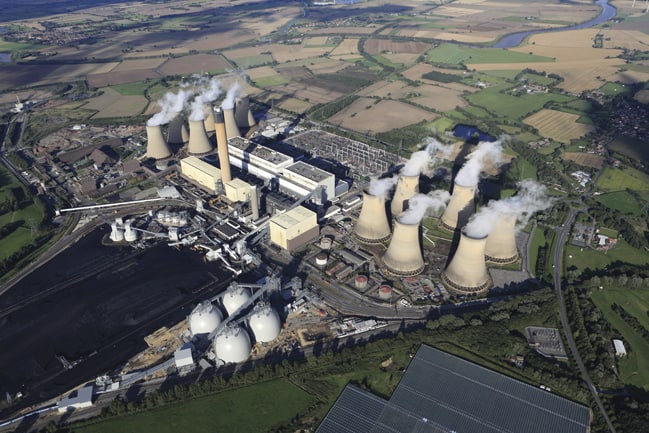The lights will be closer to going out this winter than for any time in the past decade, according to National Grid. Owing to closure of ageing power plants, the gap between peak demand and available generation capacity in Britain’s generating system will run at about 1.2 per cent, and household bills will rise by about 50p to cover the cost of some plants run by Centrica and SSE being kept on standby to fill gaps as they arise, while larger users, including steelmaker Tata, have been paid to switch some of their systems off to conserve power. Even with these measures in place, the excess capacity will be just 5 per cent.
National Grid says it is confident this will be sufficient for households and businesses to keep the juice flowing. But it seems incredible that we should have arrived at this situation. It’s not as if the industry hasn’t had any warning of the closure of coal-fired plants: that’s been known since the updated Large Combustion Plant Directive was passed in 2001. And the closure of older nuclear power stations has been known for even longer.
But economics isn’t helping the situation, it seems. Wholesale power prices are low, meaning that margins for generation are very tight. Gas-fired power stations are losing money, and new build, whether from fossil fuels or renewables, is not coming on-stream quick enough.

We aren’t economists at The Engineer, so we can’t come to any firm conclusion over whether this is a failure of free market economics, with the businesses operating in the sector just not seeing enough financial reward in investing in new capacity in time to stave off these problems. It surely can’t be a failure in planning, not with 14 years to run the projections and see that shortfalls were inevitable. But if major steelworks can’t operate properly to make sure that households have enough electricity to watch Coronation Street and make a cup of tea in the gloomy depths of February, it must surely be a failure, even if National Grid is right and its plans work.
Could successive governments have done more to prevent this? The answer must surely have been yes. The Engineer has been writing for the past decade or more about the need to update the grid, plan for replacement of nuclear power stations and investigate cleaner technologies for generating power from fossil fuels; our interview in our current issue looks at one of the attempts to do just that, with the conversion of half of the capacity of Britain’s (and Europe’s) largest coal-fired plant, Drax in Yorkshire, to run on wood-derived biomass. But even this project, despite a very long gestation period, isn’t complete; one of the plant’s six furnaces is shut down with conversion under way. And despite progress on nuclear new-build, there still isn’t even a start date for the first new station, Hinkley Point C, and some of the other proposed new plants, such as those at Sellafield, are still waiting for approval of their proposed technologies. Failures of nerve over nuclear technologies, foot-dragging on environmental legislation, and plain old lack of vision have all taken their toll, dating back decades.
It’s too late to avert any problems that might arise in 2015-16; we just have to hope National Grid is right (and pay our bigger bills). But plans such as new interconnectors to allow the UK to access excess capacity in neighbouring countries, establishment of grid-connected electricity storage for wind and solar generation and yes, some movement on nuclear plans must be pushed through. And if it takes government intervention to apply a well-aimed boot to the generating industries’ sensitive spots to achieve this, ministers should get their footwear laced and prepare to kick.

On a brighter note, it’s already been a vintage year for space exploration, and it just gets better. Like millions of others, and I’m sure many readers, I was glued to the stunning pictures beamed back to Earth yesterday by NASA’s New Horizons probe as it prepared to hurtle past Pluto, three billion miles and ten years’ journey from its origin, and I’m eagerly awaiting the pictures from its closest approach now it has reestablished contact with Mission Control. By one of those pleasing quirks of fate, it was 50 years to the day since we received our first image of another planet from space. The most distant world in our neighbourhood (and I still think it’s a planet) has gone from being a dot to a vague blur to a detailed image, showing features such as a mysterious heart shape, within my lifetime.
It’s a textbook example of a discovery with no application. Even a diehard space nut like myself can’t honestly think of any way my day to daily life will change by knowing what Pluto looks like. But navigating a tiny, nuclear-powered spacecraft such an incredible distance, ensuring it’s pointing the right way when it gets there, and retrieving its data (a task which will take another 18 months) is a stunning achievement of engineering, and one for which we must congratulate everybody involved.

Red Bull makes hydrogen fuel cell play with AVL
Many a true word spoken in jest. "<i><b>Surely EVs are the best solution for motor sports</b></i>?" Naturally, two electric motors demonstrably...